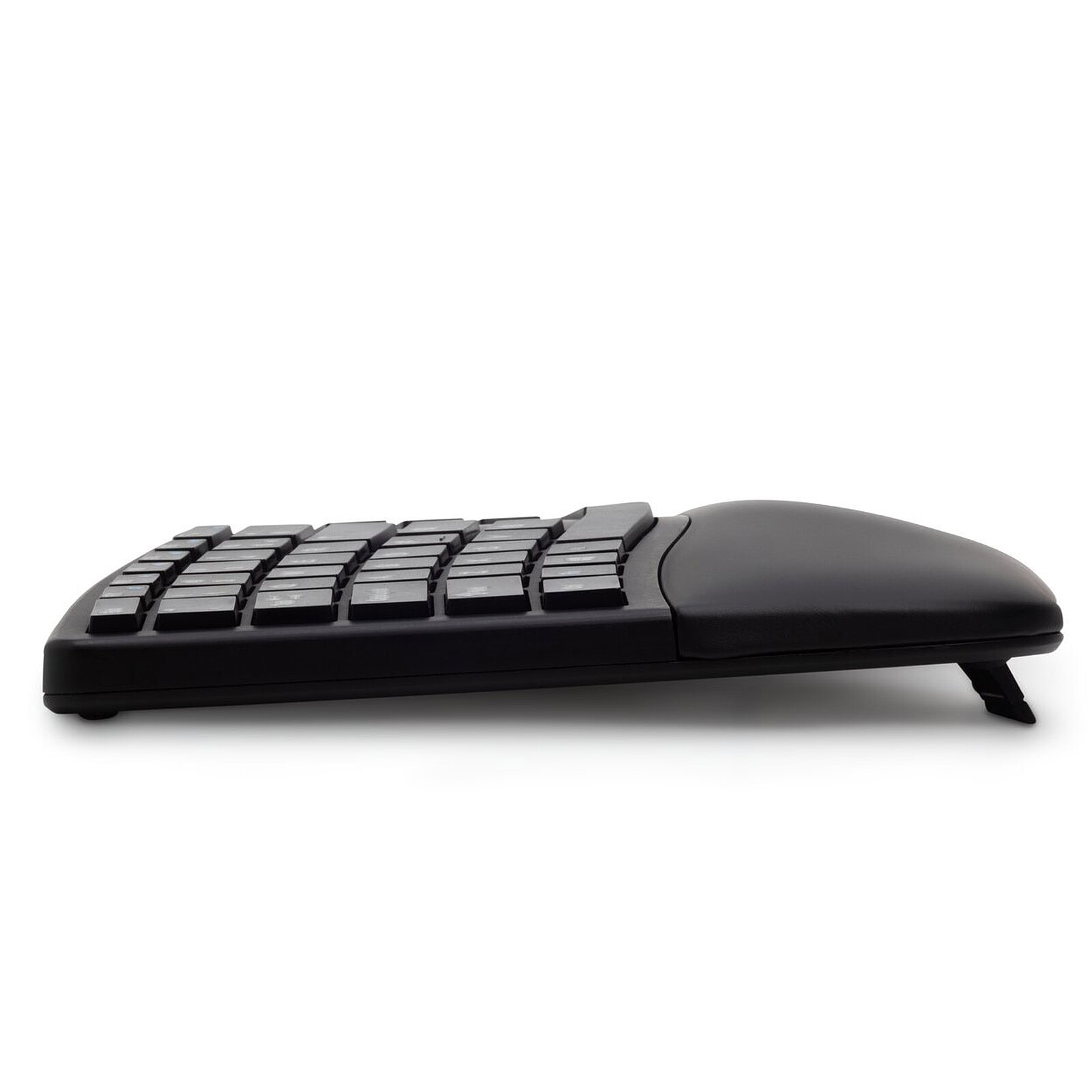

Having this extra row was a good design decision. These include an equals sign, two round brackets and another backspace key. I also like the additional row of keys above the number pad. It also has a zoom slider in the middle, which I have sometimes found useful.

It includes the standard multimedia buttons, a calculator button and some Internet-oriented buttons, and some designated customisable buttons. Being a split keyboard, you are sacrificing the traditional design for ergonomics.The keyboard also has a variety of extra buttons.

Gamers may want a lot of access to the keys using their left hands, so the split works against them in this area. This is primarily because it is a split keyboard. It was still usable, but I don't think it's as well suited for gaming as traditional keyboards. I also found that it then took me a little bit of time to get used to the traditional layout when I was using someone else's computer, but you eventually get used to comfortably typing using both physical layouts.At some points, I used the keyboard for playing games. I found that this took a while to get used to, but I definitely don't consider it a problem I prefer ergonomics over backwards compatibility. The sensitivity of the keys is otherwise very reasonable, so the keyboard is still fully functional.Being a curved and split keyboard with ergonomic design, the relative positioning of the keys feels different to traditional keyboards. I think this is due to a combination of the keyboard wearing in and me learning to press the Ctrl, Alt, Window and Shift keys a bit harder when I use them, which is unergonomic. I don't have any problems with this now, however. Because of this, my concern is mainly with the Ctrl and Shift keys, which I use regularly in keyboard shortcuts.

This is not a problem for normal key presses, but when you have to hold a key down, it can be an issue. After a while, I found that the problem was that the keys were not sensitive enough. For example, pressing Ctrl+C would not work. When I first moved to this keyboard, I found that sometimes keyboard shortcut combinations did not work. Of course, this isn't much of a problem since the users of these keyboards should be touch-typing most of the time anyway.One other issue I found was the sensitivity of the keys. On mine, half of the letter D has rubbed off, which shows that the printing of the symbols on the keys is poor and not as durable as with older, robust keyboards. The backwards tilt is also a good idea and keeps your wrists at a natural angle.The keys are soft and light to press. The ergonomic curvature of the keyboard makes typing a lot more natural your hands literally sit in a completely relaxed and natural position over the keys. The wrist-rest at the front is very comfortable for your wrists.
#Microsoft natural ergonomic keyboard 4000 wireless version how to
If that's you, you might have already figured out how to type ergonomically on standard keyboards, which is better anyway since your skills can be transferred to most keyboards rather than limited to niche ones like this.Being a split keyboard, using it is much easier on your wrists. In case you don't know what I mean when I say "traditional touch-typing", I'm talking about typing using the method that uses the concepts of a "home row", "one finger per letter" and "bottom-right to upper-left columns".Even if you do touch type using a better or different technique than the traditional method, this probably won't suit you, since it's designed with the traditional method in mind. Don't get it if you don't type that way otherwise you'll probably find it difficult to work with and counter-intuitive for the way you want to use it. I was consistently happy with it!Please note, however, that this keyboard is intended for traditional touch-typing, and most of this review is from that perspective. I had one of these for roughly four years.


 0 kommentar(er)
0 kommentar(er)
